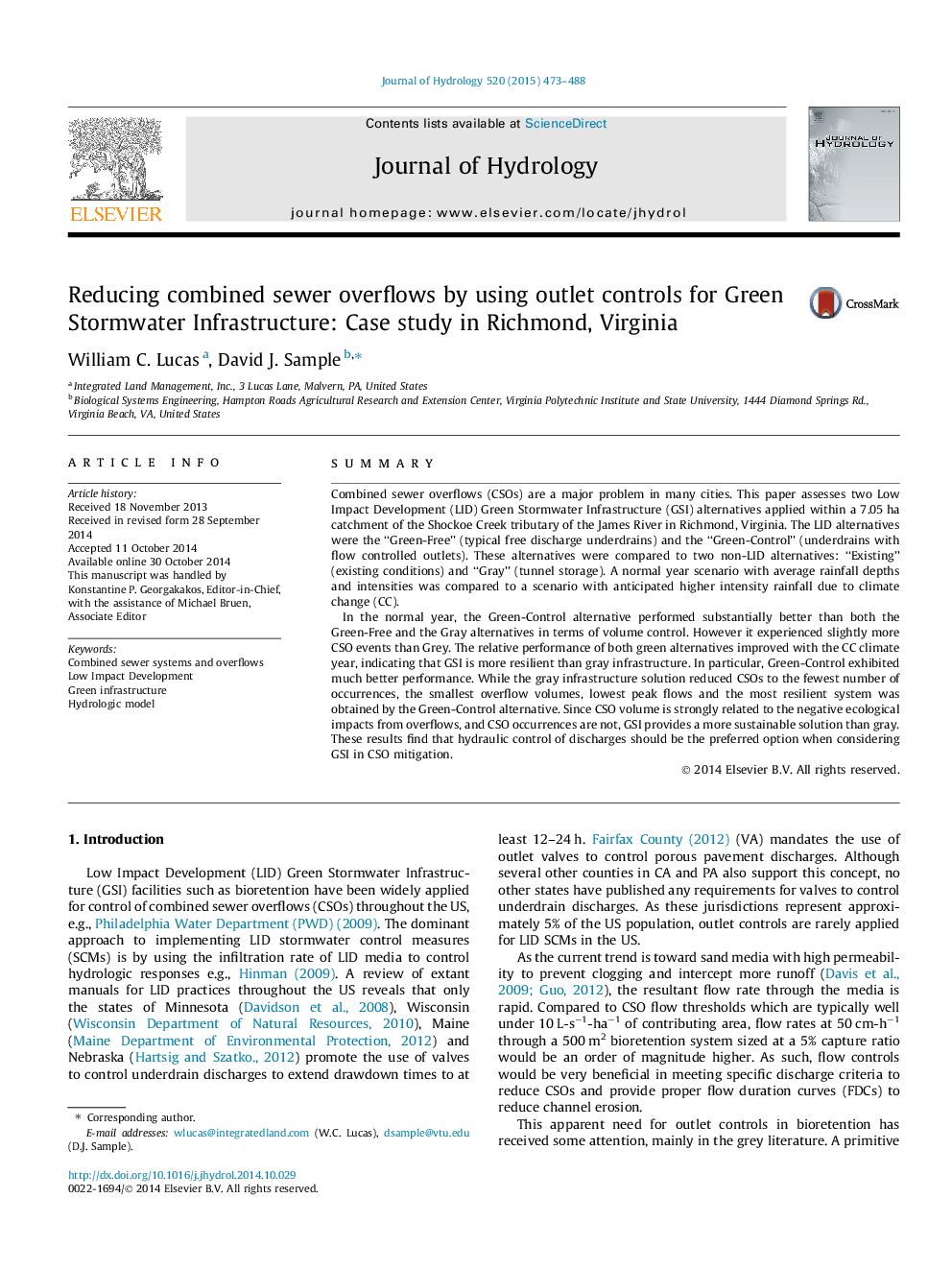| کد مقاله | کد نشریه | سال انتشار | مقاله انگلیسی | نسخه تمام متن |
|---|---|---|---|---|
| 6411900 | 1629930 | 2015 | 16 صفحه PDF | دانلود رایگان |
- We compare source control of combined sewer overflows to a storage option.
- Control alternatives included a free discharge and a controlled outlet.
- Normal annual runoff was compared with altered flows from increased intensity.
- We found that storage performed best at reducing occurrences of overflows.
- The controlled outlet reduced more runoff volume, and was resilient to changes.
SummaryCombined sewer overflows (CSOs) are a major problem in many cities. This paper assesses two Low Impact Development (LID) Green Stormwater Infrastructure (GSI) alternatives applied within a 7.05Â ha catchment of the Shockoe Creek tributary of the James River in Richmond, Virginia. The LID alternatives were the “Green-Free” (typical free discharge underdrains) and the “Green-Control” (underdrains with flow controlled outlets). These alternatives were compared to two non-LID alternatives: “Existing” (existing conditions) and “Gray” (tunnel storage). A normal year scenario with average rainfall depths and intensities was compared to a scenario with anticipated higher intensity rainfall due to climate change (CC).In the normal year, the Green-Control alternative performed substantially better than both the Green-Free and the Gray alternatives in terms of volume control. However it experienced slightly more CSO events than Grey. The relative performance of both green alternatives improved with the CC climate year, indicating that GSI is more resilient than gray infrastructure. In particular, Green-Control exhibited much better performance. While the gray infrastructure solution reduced CSOs to the fewest number of occurrences, the smallest overflow volumes, lowest peak flows and the most resilient system was obtained by the Green-Control alternative. Since CSO volume is strongly related to the negative ecological impacts from overflows, and CSO occurrences are not, GSI provides a more sustainable solution than gray. These results find that hydraulic control of discharges should be the preferred option when considering GSI in CSO mitigation.
Journal: Journal of Hydrology - Volume 520, January 2015, Pages 473-488
